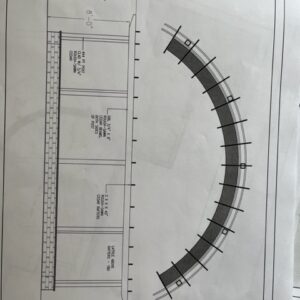I have a young friend who has a small contracting business and he has a client that wants a pergola built. My friend is looking to mill western red cedar into 1/8”or 1/4”
boards to make several finished laminations 3/4” thick. They will end up being 10-12 feet long and have a 15’-4” radius. Questions are what to use for adhesive and possibility of steam or dry bending.
Discussion Forum
Get It All!
UNLIMITED Membership is like taking a master class in woodworking for less than $10 a month.
Start Your Free TrialCategories
Discussion Forum
Digital Plans Library
Member exclusive! – Plans for everyone – from beginners to experts – right at your fingertips.
Highlights
-
Shape Your Skills
when you sign up for our emails
This site is protected by reCAPTCHA and the Google Privacy Policy and Terms of Service apply. -
 Shop Talk Live Podcast
Shop Talk Live Podcast -
 Our favorite articles and videos
Our favorite articles and videos -
E-Learning Courses from Fine Woodworking
-
-
 Fine Woodworking New England Event
Fine Woodworking New England Event -













Replies
I make cedar strip canoes and at those lengths the strips are very flexible without steam. Mine are 1/4” thick and bend around a 15’ set of canoe forms easily. If the curves are anchored in the pergola to give the desired curvature then I wouldn’t be concerned with spring back. I would do 3 laminations of 1/4” and use titebond 3. The resulting lamination will still be flexible enough to fit the pergola.
Soft woods don't react to steam bending like hardwoods. They also dont like to bend much. Often they will tend to curl when steamed. Wider the piece the more likely it will curl.Depending on the amount of curve they will easily bend to a certain point and beyond that they just snap. I would build a two part form slightly over the finished diameter. It's possible that if the laminations are thin enough that the cedar might make the bend without the necessity for steaming. Thin enough it probably will but that could be even less than 1/8 ", depends on your lumber and diameter. Kiln dried will be more problematic. You have to play around with that. If you find you need to steam -then steam. If you use a two part form you have a inside and outside diameter determined by the final thickness. I've built a press for that but a well thought out clamping plan can work. I've done one sided forms with a strap clamp but find it necessary to make each successive piece slightly longer than the one before it as the strap can get hung on the inside length. Make your piece oversize for width to compensate for any sideways slip and there is a lot of glue squeeze out that needs to be cleaned up at the end. I find it easier to just remove wood than to remove glue. Epoxy for an outside project is probably the best but it's messy and since your working against time I find that not getting it everywhere, and by that I mean, on your inside and outside exposed surfaces is difficult. But it is gap filling .Lots of glove changes handling the pieces. I've lately been using titebond lll and it seems to be working but I need to get back to you in a year or two to be able to give you a definitive answer as how it holds up under weather. ...but it tends to not creep which is a necessity for any stressed lamination work. Because the finished product is under stress you need a full cure before releasing clamping pressure -so with multiple pieces unless you make multiple forms you can expect this to take days rather than hours and I find that titebond,especially if you steam, is a pretty slow cure. 24 hours in a warm environment. I've had things pop when I've pushed it.
3/4" thick, 10-12' long, 15'4" radius... How wide will they be? Which parts in the drawing? which direction is the thickness?
Are the finished laminations just 3 pcs of 1/4" thick material XX" wide (maybe white outline parts in the drawing?), or are they many pcs of 1/4" material, 3/4" wide and stacked XX" high like a gluelam beam (maybe dark grey arc in the drawing?)?
Without all of the dimensions a method cannot be recco'd.
3 x 1/4" should do it, I use epoxy for that and plan for a couple inches of spring back.
It's not impossible to figure out from your information. The ability to bend is determined by the material you use, hopefully good clear stock, and the thickness you are attempting to bend for a given diameter. If it bends ,it bends , pretty simple actually, you just have to find that sweet spot. You know, run a test, every board is different. I find that using more thin pieces is easier and probably faster in the long run than trying to use fewer thicker pieces that fight you. More waste of course making thin stock. The width doesn't matter with enough clamping and a proper form . The thickness of your finished product doesn't matter- at least to the process. Once you start its all the same. I just did a 14 layer set of legs, big ones, and the only difficulty over something with fewer parts is getting the clamping pressure. My press uses house Jack's and I needed about all they had in them!
I’d break this radius down into smaller curved laminated segments. Alternate open M&T joints, use epoxy, and reinforce with stainless steel through bolts.